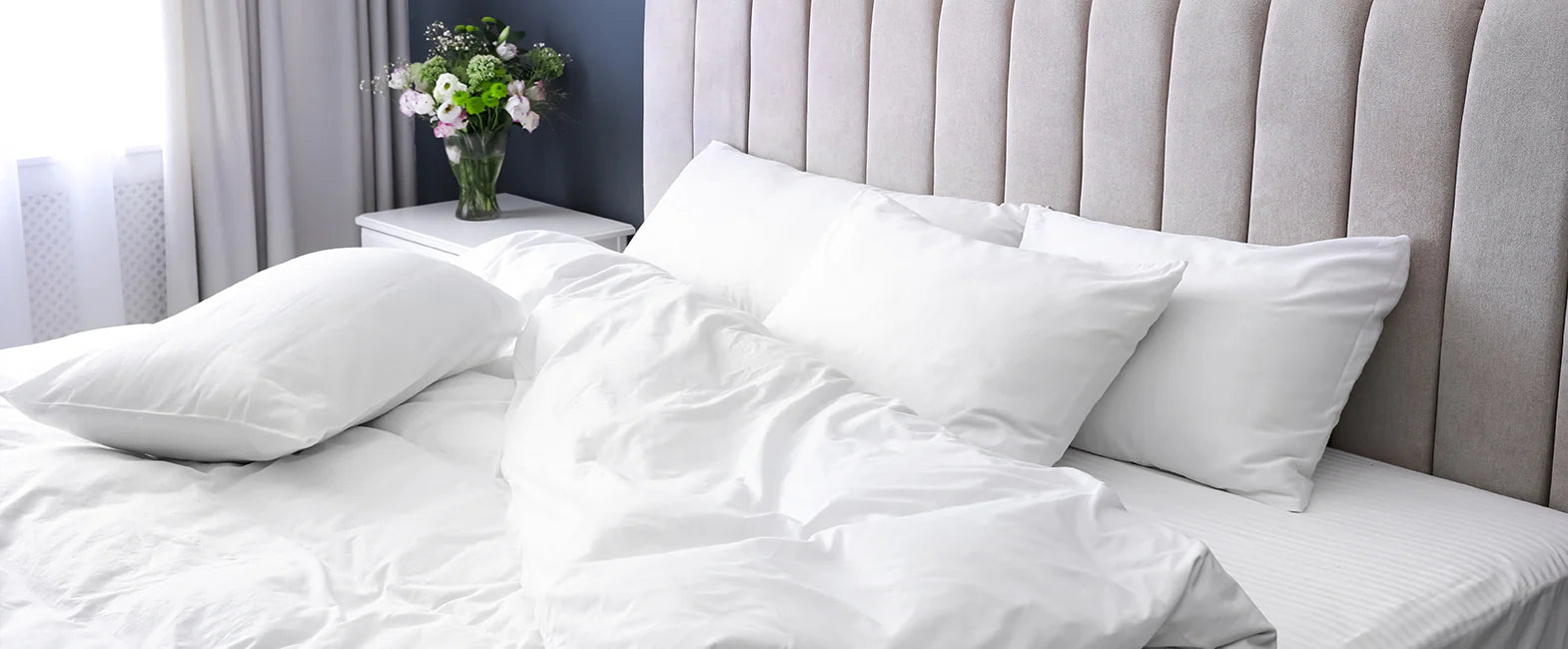At Maholi Inc., we've been crafting comfortable sleep experiences since 1994, and over the years, we've grown increasingly aware of the environmental implications of bedding materials. In this blog, we'll embark on an enlightening journey through various bedding products and materials, examining their environmental footprints. Our aim is to help you, our valued customers, make more eco-conscious choices for a greener, healthier planet.
Cotton Bedding: Comfort with a Cost
Cotton is a classic choice for bedding, loved for its softness and breathability. However, its environmental impact is a mixed bag:
- Conventional Cotton: Large water footprint and heavy pesticide use.
- Organic Cotton: A greener alternative, using less water and no synthetic pesticides.
Environmental Considerations:
- Water Usage: Cotton is water-intensive. Opting for organic cotton sheet sets can reduce water consumption significantly.
- Chemical Use: Pesticides in conventional cotton farming pose environmental risks, whereas organic cotton farming practices are more sustainable.
Polyester and Synthetic Fibers: A Double-Edged Sword
Synthetic fibers, such as polyester, are a staple in the bedding industry due to their durability and low cost.
- Production: Derived from petroleum, their production is energy-intensive and contributes to greenhouse gas emissions.
- End of Life: Non-biodegradable, they pose challenges in waste management.
Balancing Act:
- Affordability vs. Sustainability: While cost-effective, the long-term environmental cost of synthetics is significant.
- Recycled Options: Some newer synthetic fabrics use recycled materials, offering a more sustainable alternative.
Bamboo Bedding: The Eco-Friendly Contender
Bamboo bedding has gained popularity as an eco-friendly option.
- Sustainability: Bamboo is a highly renewable resource with minimal need for pesticides and water.
- Processing: The environmental impact varies depending on the processing methods – some methods are more chemical-intensive than others.
Why Bamboo?
- Rapid Growth: Bamboo is one of the fastest-growing plants, making it a sustainable choice.
- Biodegradable: Bamboo fibers are biodegradable, reducing landfill waste.
Silk Bedding: Luxurious but Complex
Silk, known for its luxury and comfort, has a unique environmental profile.
- Production: Silk production is labor-intensive and often more eco-friendly than synthetic alternatives.
- Animal Welfare: The traditional silk harvesting process raises concerns about animal welfare.
Silk Considerations:
Eco-Friendly Harvesting: Some newer methods of silk production are more humane, avoiding harm to silkworms.
Conclusion
Choosing the right bedding material is a complex decision that balances comfort, cost, and environmental impact. At Maholi Inc., we're committed to guiding our customers towards more sustainable choices, offering a range of bedding options that cater to various environmental and comfort needs. By understanding the impact of these materials, we can all make more informed decisions, contributing to a healthier planet.

Share:
The Complete Guide to Choosing the Right Pillow for Your Sleeping Style
Mix and Match: Creating a Personalized Bedding Look